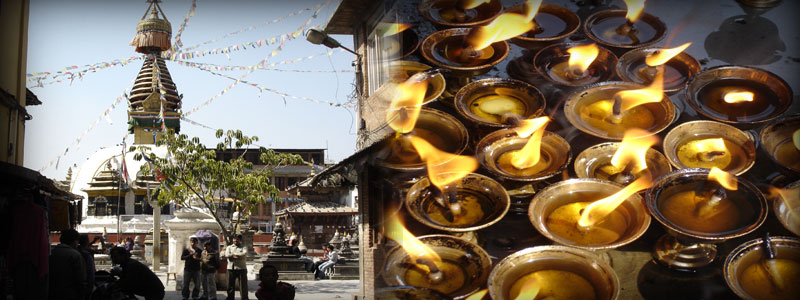Giving back: my Nepal adventure
I visited Nepal in March and April 2012 and spent time in some schools and an orphanage teaching English in and around Kathmandu, the capital city. I then went trekking in the Annapurna Sanctuary in the Himalaya.
I studied and gained the TESOL certificate whilst in Kathmandu and had a unique insight into the culture, language and day to day life of the Nepali people.
I lived and worked in Kathmandu, an incredibly chaotic, noisy, colourful, polluted, dusty, fascinating, ancient and modern, culturally soaked capital city. Nepal has no formal constitution or long standing Government. Its period of unrest and upheaval is largely over but there are still bhands (strikes) and marches. There isn’t much discernable infrastructure, no rubbish collection, it lacks a good road system (most roads are tracks full of holes). Load shedding (electricity cuts to you and me) happens daily. The people work very hard and continue to wait patiently for change. They are friendly and hospitable. Nepal remains, however, one of the ten poorest countries in the world.
Schools
Schools are resourced, but take a look at the pictures for a brief snapshot. Our children and young people in the UK have so much more compared to students in Nepal. The cost of schooling for many is high and includes uniforms and materials. Resources are basic (mostly chalk and blackboard), and children sit in benched rows behind narrow, basic desk tops. There are up to 40 in a typical class.
All teaching material were hand produced from scratch so I had to learn how to draw pictures on paper very quickly! I had a crash course in Nepali and had to learn and speak 80 words and 50 phrases in the first week, and be able to hold a six line conversation. A reminder of what it is like to learn a language other than my own native tongue. What was important was that students heard and learnt from an authentic English voice, so I became aware of how important it is to speak Standard English correctly.
Bright Horizons Children's Home
A peaceful, happy place in Matathirta (Mother Earth) in the Valley, east of the capital. I spent two days here with two of my fellow trainee teachers. We taught songs and chants as well as English. Children here are orphans and cannot be cared for by family. Many have had deprived childhoods we can only imagine in the west. Bright Horizon provides education, pastoral and health care for some 200 boarders irrespective of ethnicity, religion or caste, from kindergarten to class 10. In this rural setting, with views of the Himalaya and the capital in the distance, the children grow up in an environment away from the dangers of the streets of the capital.
Festivals
A week did not go by without there being a festival of some sort in Nepal. There are more than 50 festivals celebrated every year and I counted seven whilst I was there. The two most thrilling ones to be part of were Holi (Spring Festival) and Bhairab Naach.
The former is a national holiday where masses of people take to the streets and throw scented, coloured dye at each other shouting “Happy Holi”, along with water bombs. The ancient Durbar Square is a World Heritage Site, and in any other country would be chained off, but in Kathmandu people covered in coloured paint packed into this temple area to dance, sing and get soaked by giant water hoses. Needless to say westerners were particularly targeted with dye and water. The Bhairab Naach, celebrated once every 12 years, is "Bhairava's Dance", an ancient masked dance performed by the Newar community as part of the Indra Jatra festival. It combined dance, performance in khawpa (masks), elaborate ceremonial clothes and religious processions. The gruesome severed head of a goat was the centre piece of a display of colour and food at the path to the temple.
More of the Sights







